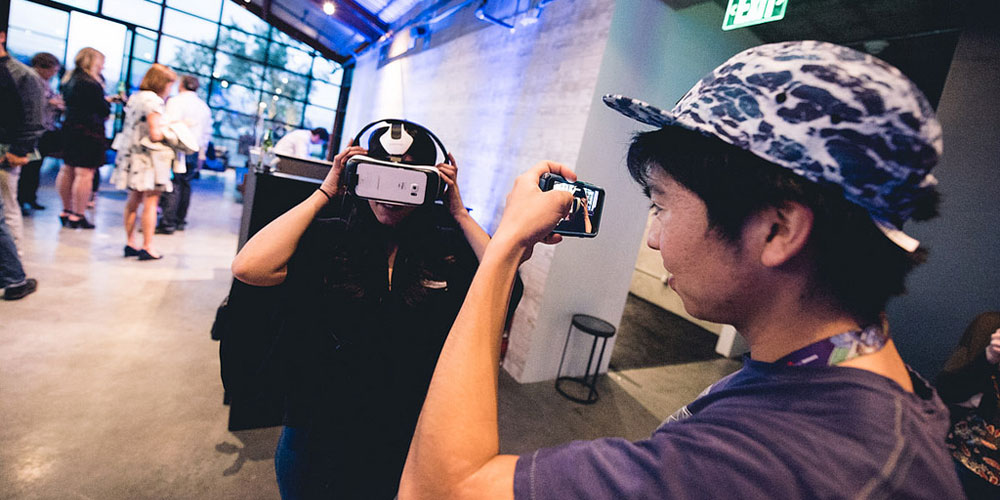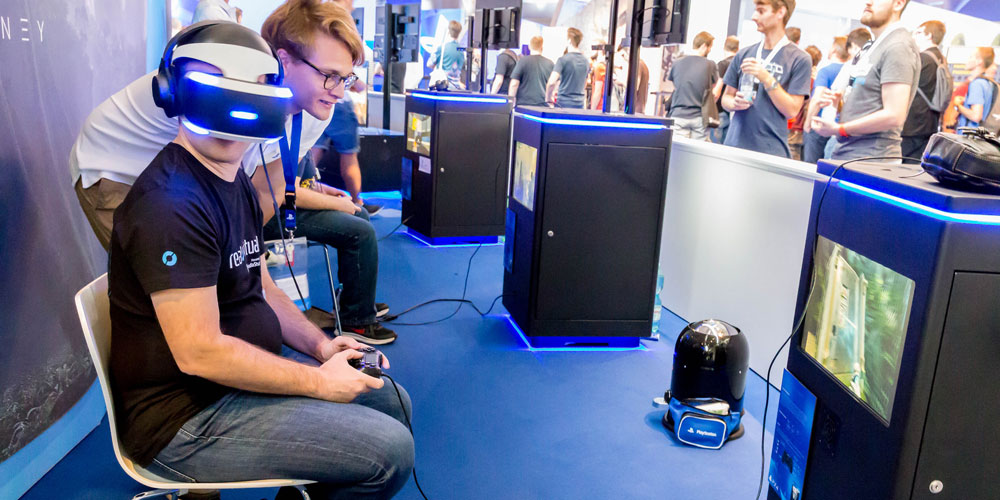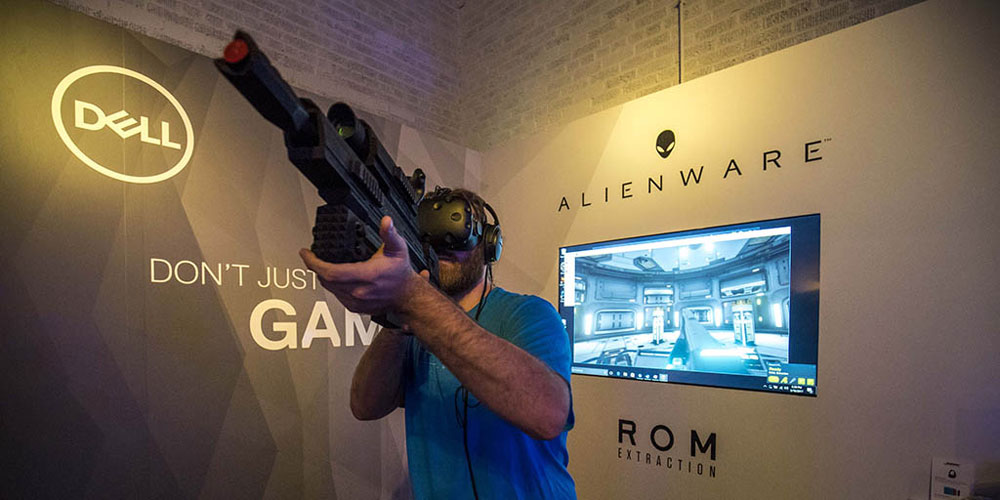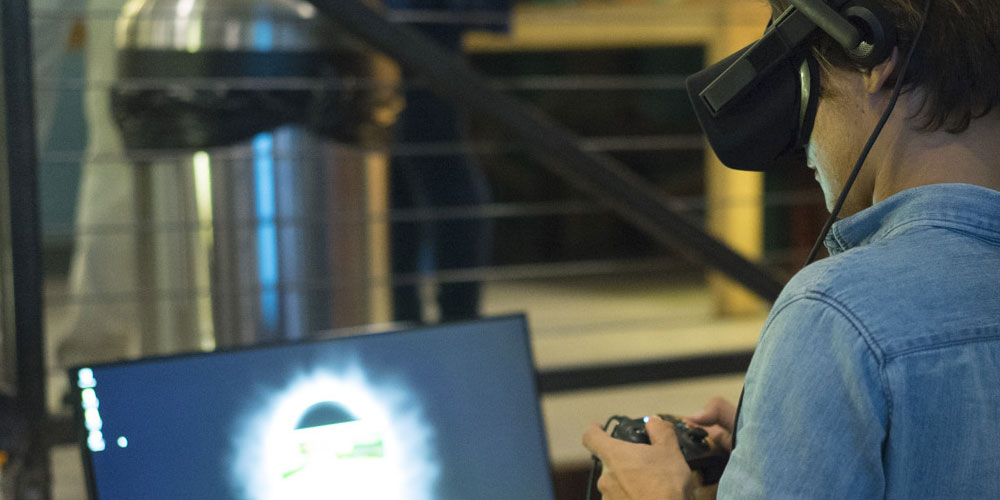Virtual Reality (VR) – what does it really mean? What does it encompass? Is everyone of the same mindset when it comes down to describing exactly what VR is and, more importantly, is not?
I know it is bad form to start a topic where you are looking for answers and then more questions come at you right off the bat, but in a world with a lack of definitions currently. The Association for Educational Communications and Technology has a great academic explanation for classifying VR and hopefully we can distill that down even further as we go through the musings.

There are several different experiences available on the market which give a range of different experiences. Hopefully, the overview outlined here will give you a better understanding of what to expect from each device and to have the correct expectation of performance. Is it unreasonable to think that a phone encased in cardboard and held onto your face by your own hands is going to yield the same experience as a full headset with inbuilt audio and full room tracking immersion being driven by a full-fledged PC? The short answer is yes. For a longer explanation and to see the ‘working out rationale’ then please – continue reading.
At this moment in time there are three ways of consuming VR content with differing levels of experience – phone-based, console-based and PC-based.
Phone-Based VR

Phones are ubiquitous. They are now such a part of our everyday lives that they do far more than just keep us in voice contact with the rest of the world. They now tell us what is involved in our day, traffic conditions to make sure we are on time for a meeting, ordering takeaways and filling our social calendars with suggestions and recommendations. It makes sense then that the highest volume of VR ready devices are phones. The most common example is 360 video, and this forms the gateway to VR – a user can pan around inside the video and experience more than just a limited area flat screen.
For other forms of VR the phone would normally reside inside a housing using two lenses to give separation of the left and right view and immerse the user that way. This increases the load on the phone as it is now doing far more than just answer calls and so can dramatically use up precious battery life and heat up the phone considerably. To some this is a trade off of experiencing VR on the move at a low price point and without cables or wires and is a good starting point in the VR journey. However, to others, this is a half-way house to experiencing immersive VR which requires higher spec equipment.
I always find it an interesting data point when it is said phone VR starts at $15 (about the price of a Google Cardboard for instance) and that VR is too expensive further up the chain as it requires a headset and PC to drive it. This makes an assumption that the user already has a phone and yet the same assumption is not made that a user already has a gaming PC that is capable of driving VR. If we compare like-to-like, then VR on a phone is the price of a phone plus a headset which significantly reduces the price differential.
Console-Based VR

The Playstation VR offering has been available for some time now and offers an experience above that of a phone. Increased resolution, a more immersive experience driven by better graphics and central processing unit (CPU), as well as the introduction of external controllers can increase interactivity and thus immersion.
If you are already a Playstation 4 user, the addition of PlaystationVR headset, camera and controllers can be a good option if you are not looking to purchase a PC-based solution. It also has a certain family acceptance value in that you are not dedicating space in the house to a VR setup and can be accessed in the family TV space relatively easily. However, for full immersion and the ability to look, aim and shoot behind you quickly then we need to look at other solutions.
PC-Based VR

The top level of VR offering is the PC-based experience and here you can have multiple different offerings, again giving some unique benefits and limitations. Windows Mixed Reality has recently been announced by Microsoft and this supports both augmented reality (Hololens) and virtual reality devices. It is important not to be confused by the name of the technology and think that anything that uses Windows Mixed Reality is indeed a device where you are overlaying graphics on your view of the real world. This assumption could be costly as family heirlooms, the TV set, and possibly the pet dog, fall foul of the thinking that the inside of the spaceship you are liberating was in fact your living room.
Several PC manufacturers have announced headsets to work on Windows Mixed Reality including Dell, Acer, Asus, Lenovo and HP. These were all based off the Microsoft design and unique touches have been made by each vendor. However, remember, these are VR devices.
The resolution of the Dell Visor (which I wrote about previously) is increased over console and phone based VR and also offers the six degrees of freedom controllers (up/down/left/right/forwards/backwards) for full immersion. Simple things were also taken into account to increase comfort for the wearer such as making sure the cables exit the rear of the unit to help with balance and that the visor can be lifted without removing the headset. If you are having a group VR session with friends then you also have the removable/replaceable foam surround for comfort and also an easy to use tension wheel for head adjustment.
One area of VR that can cause friction in households is the placement of the cameras/lighthouses/trackers to detect movement of the user in 3D space. Whilst some may think they are a talking point of interest and fall in the same category as photos on the mantle or the artistic arrangement of twigs in a tall glass vase, then others in the household may beg to differ. The Dell Visor operates through inside out tracking by examining the environment via two cameras in the headset and mapping spatial location to fixed points in the room. This means no external cameras or sensors to clutter the environment. The controllers are also tracked via the cameras and so the whole unit is contained to the space of the user – as you turn the cameras work out the difficult stuff and ensure you have a smooth, immersive experience. The one drawback to this is that if the controllers are out of view of the headset cameras for an extended period of time then the tracking on the controllers is lost.
Oculus Rift and the HTC Vive are the top devices on the market today. Offering two lighthouses, in the case of Vive, and three USB sensors for the Rift then full 360 tracking can be achieved. This comes at the expense of a dedicated space to set up the cables and play area but offers the best overall experience. The screens are based on OLED technology, rather than LCD, and this can give a better image via the refresh and latency advantages.
So, in summary, every experience comes with tradeoffs and it is important to consider budget, the experience you want, and the impact to others around you. Costs and experience generally track each other – the more you spend the better the end result – seems to be an immutable fact of life. All the way from the entry level costs of a phone device as an affordable entry point, all the way up to the highest end today – the HTC Vive.
How To Choose PC Configuration

Now we come to the question of ‘You want to go with a PC experience but how do you choose which PC configuration is right for your needs?’
There are lots of stickers, logos, marketing statements that basically say ‘VR Ready’ or ‘Certified’ for individual components in VR. However, the solution is only as strong as the weakest part. If you put a GPU into an underpowered system then the CPU cannot feed the pipeline quick enough to give a good experience. This would be like putting an 800BHP engine into a small family car. Sure, it might fit, but then as soon as you press the accelerator expect it to look and feel like a clown car as the tires melt and bits and pieces fall off or break off the chassis. Not a funny experience if it is your car.
At Dell we have put a lot of work behind our new ‘Ready for VR’ testing and logo and it spans both consumer and commercial products. By choosing a system that is labelled ‘Ready for VR’ then you can be assured of a great experience whether you choose a Windows Mixed Reality headset, an Oculus Rift or an HTC Vive – we are making the choice easier and eliminating confusion and doubt that the system may not be able to take full advantage of the new wave of VR functionality. The logo will be displayed on the website against all systems so buyers can purchase with confidence.
The More You Know
With all that said, then hopefully this has helped in positioning some of the key technologies available today. Ultimately it is your choice as to which experience is right for you and how much time, space and finance you want to put into it.
VR is maturing and the ecosystem is growing, product offerings are continuing to increase and, as they do, so does complexity. All of the choices can lead to analysis paralysis – the fear of choosing the wrong path. At the same time, the technology is growing in the consumer space as well as the commercial and there is a FOMO effect – the fear of missing out on this new technology.
My advice in all this? Try them all.
There are location based experiences, stores, tech shows, friends who have already taken the plunge, VR Centers of Excellence for our commercial customers – there are places you can see and touch (and in some cases smell) various levels of VR experience and work out what is right for you. Do not believe that if you have tried a phone VR experience that that is as good as it gets and also do not run away with the notion that the entry cost for VR runs into the thousands of dollars. Dell and the market at large are working to reduce the entry costs of VR to give more access and experiences to all and we are seeing the fruit of that labor starting to appear today.
Above all, whichever path you choose, have fun! It is, quite literally, a different world out there waiting to be explored and all that is missing is you.